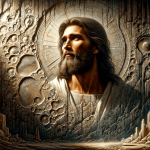
(From the Eborn Books website)
As many of you are undoubtedly aware, the Interpreter Foundation will almost certainly be defunct by 1 January 2014. In the meantime, though, we continue to sputter along. It’s the kind of death you sometimes see in grand opera — think of the “Liebestod,” from Richard Wagner’s Tristan und Isolde — that goes on and on and on and on. And on.
The latest article in Interpreter: A Journal of Latter-day Saint Faith and Scholarship — this one by Barbara Morgan Gardner — appeared today at noon:
“Women and the Priesthood in the Contemporary Church”
Abstract: During the last century there has been a prophetic emphasis on the understanding of women and their priesthood power and authority that has been unprecedented since the days of Joseph Smith. Through the use of scripture and teachings of our prophets and leaders of the restoration, this paper seeks to clarify the contemporary role of women in relation to their priesthood power and authority. By integrating the patriarchal priesthood—that priesthood entered into by Eve and Adam, lost during the time of Moses, and again revealed in our day in the Kirtland Temple—with the administrative priesthood found in the public Church and spoken of more traditionally, we can better understand the privileges, powers, and authorities associated with the temple that are critical for our day.
[Editor’s Note: Part of our book chapter reprint series, this article is reprinted here as a service to the LDS community. Original pagination and page numbers have necessarily changed, otherwise the reprint has the same content as the original.
See Barbara Morgan Gardner, “Women and the Priesthood in the Contemporary Church,” in Proceedings of the Fifth Interpreter Foundation Matthew B. Brown Memorial Conference, 7 November 2020, ed. Stephen D. Ricks and Jeffrey M. Bradshaw, Temple on Mount Zion 6 (Orem, UT: The Interpreter Foundation; Salt Lake City: Eborn Books, 2021), in preparation. Further information at https://interpreterfoundation.org/books/the-temple-past-present-and-future/.]
***
Also new today on the website of the Interpreter Foundation:
“Hearing the Voice of the Lord in the Mind: Blessing and Helping Missionaries” (Part Three of a Series Compiled by Dennis B. Horne)
***
Here are two books that Interpreter will publish in April, or thereabouts. Have a look at their tables of contents:
Stephen D. Ricks and Jeffrey M. Bradshaw, eds., The Temple: Symbols, Sermons, and Settings
Proceedings of the Fourth Interpreter Matthew B. Brown Memorial Conference “The Temple on Mount Zion,” 10 November 2018
Stephen D. Ricks and Jeffrey M. Bradshaw, eds., The Temple: Past, Present and Future
Proceedings of the Fifth Interpreter Matthew B. Brown Memorial Conference “The Temple on Mount Zion,” 7 November 2020
For an overall look at the books that Interpreter has published thus far, by the way, here’s a link:
***
And here’s another book that will be on its way from the Interpreter Foundation very soon:
PRE-ORDER: Eborn Books & The Interpreter Foundation Present: Hugh Nibley Observed — Hardbound
***
Here, as has been my practice of late, I share a few links from a previous issue of Interpreter: A Journal of Latter-day Saint Faith and Scholarship. I do it for people who may have missed these articles when they first appeared or who might have forgotten them:
Duane Boyce, “Sustaining the Brethren”
Abstract: Believing Latter-day Saints hold different views about what it means to sustain the presiding Brethren of the Church. In this article, I outline some considerations that might be kept in mind as members of the Church evaluate their views on this vital topic and the Lord’s admonition to sustain the Brethren by their faith, prayers, and actions.
A. Keith Thompson, “Who Was Sherem?”
Abstract: The Book of Mormon’s first anti-Christ, Sherem, “came among” the Nephites before their first generation was ended. Because he was an eloquent believer in the Law of Moses, there has been a variety of surmise as to his background. Was he a Lamanite, or a Jaredite or Mulekite trader? Was his presence among the separated Nephites evidence of early interaction between the Nephites and other civilisations in Nephite lands from the time of their first arrival? This short article reviews the various suggestions about Sherem’s identity and suggests he was most likely a descendant of the original Lehite party but that his identity was purposely suppressed so as not to give him more credibility than he deserved.
Loren Blake Spendlove, “Whoso Forbiddeth to Abstain from Meats”
Abstract: The double negative phrase “forbiddeth to abstain” as found in D&C 49:18 can be confusing and syntactically challenging for readers. While some have argued that the phrase should be read and understood literally, the Doctrine and Covenants of The Church of Jesus Christ of Latter-day Saints indicates that a literal reading is not correct. In this article I demonstrate that the phrase “forbid to abstain” was an accepted English idiom prior to and for a few decades following the receipt of D&C 49, even though it has vanished from contemporary usage completely. The meaning of this idiomatic expression was “command to abstain,” in opposition to its literal meaning. The probable origin of this expression is the Greek text of 1 Timothy 4:3, which in English partially reads “commanding to abstain from meats.” However, in Greek the phrase “commanding to abstain” would be rendered more correctly as “forbidding to abstain.” I conclude that the proper reading of “forbiddeth to abstain” in D&C 49:18 is the idiomatic rather than the literal one and that it should be understood as “commandeth to abstain.”
Chris Miasnik, “Where in Cincinnati Was the Third Edition of the Book of Mormon Printed?”
Abstract: The third edition of the Book of Mormon was stereotyped and printed in Cincinnati in 1840. The story of the Church’s printer, Ebenezer Robinson, accomplishing this mission has been available since 1883. What has remained a mystery is exactly where in Cincinnati this event took place; there is no plaque marking the spot, no walking tour pamphlet, no previous images, and its history contains conflicting documentation. This article will attempt to untangle the mystery by using old descriptions, maps of the area, and images. I also honor the printer, Edwin Shepard, whose metal and ink made this edition a reality.
Diane E. Wirth, “Celestial Visits in the Scriptures, and a Plausible Mesoamerican Tradition”
Abstract: Scriptural accounts of celestial beings visiting the earth are abundant in both the Bible and the Book of Mormon. Whether a descending deity or angelic beings from celestial realms, they were often accompanied by clouds. In this paper a short analysis of the various types of clouds, including imitation clouds (incense), will be discussed. The relation between the phenomenon of supernatural beings, sometimes in clouds, may have had a great influence on descendants of Book of Mormon cultures. For these people, stories that were told from one generation to the next would have been considered ancient mythological lore. It may be plausible that future generations attempted to duplicate the same type scenario of celestial beings speaking and visiting their people. These events were sometimes recorded in stone.
Abstract: The mention of “Abish” and a “remarkable vision of her father” (Alma 19:16) is itself remarkable, since women and servants are rarely named in the Book of Mormon text. As a Hebrew/Lehite name, “Abish” suggests the meaning “Father is a man,” the midrashic components ʾab- (“father”) and ʾîš (“man”) being phonologically evident. Thus, the immediate juxtaposition of the name “Abish” with the terms “her father” and “women” raises the possibility of wordplay on her name in the underlying text. Since ʾab-names were frequently theophoric — i.e., they had reference to a divine Father (or could be so understood) — the mention of “Abish” (“Father is a man”) takes on additional theological significance in the context of Lamoni’s vision of the Redeemer being “born of a woman and … redeem[ing] all mankind” (Alma 19:13). The wordplay on “Abish” thus contributes thematically to the narrative’s presentation of Ammon’s typological ministrations among the Lamanites as a “man” endowed with great power, which helped the Lamanites understand the concept of “the Great Spirit” (Yahweh) becoming “man.” Moreover, this wordplay accords with the consistent Book of Mormon doctrine that the “very Eternal Father” would (and did) condescend to become “man” and Suffering Servant.
Julie M. Smith, “A Redemptive Reading of Mark 5:25-34”
***
“Yo-Yo Ma Plays Mini-Concert at Massachusetts Vaccination Site”
My wife and I received our second Deep State scamdemic injection today. Thus far, as with the first vaccination, I’ve had absolutely no adverse reaction. Not even a slightly sore arm.
I looked around the vaccination area, hoping to see Yo-Yo Ma. But he wasn’t there. Maybe — it was roughly lunch time — he was just out for a bite. All I could see was a large golden statue of Bill Gates, festooned with flowers and with candles burning at its feet. I performed the customary twelve reverent genuflections before the shrine, emptied my wallet into the collection basket as an offering, and that was it. Painless!










